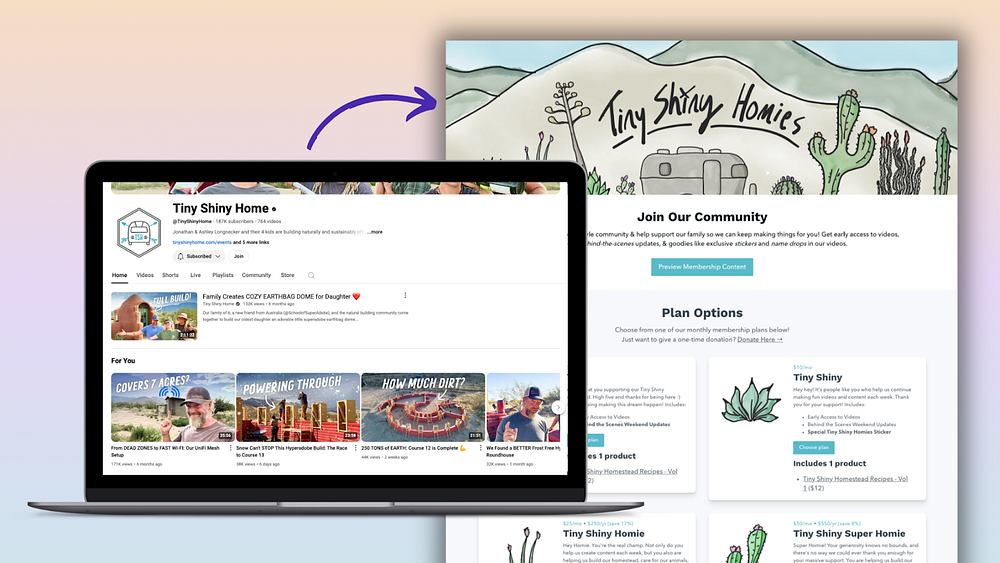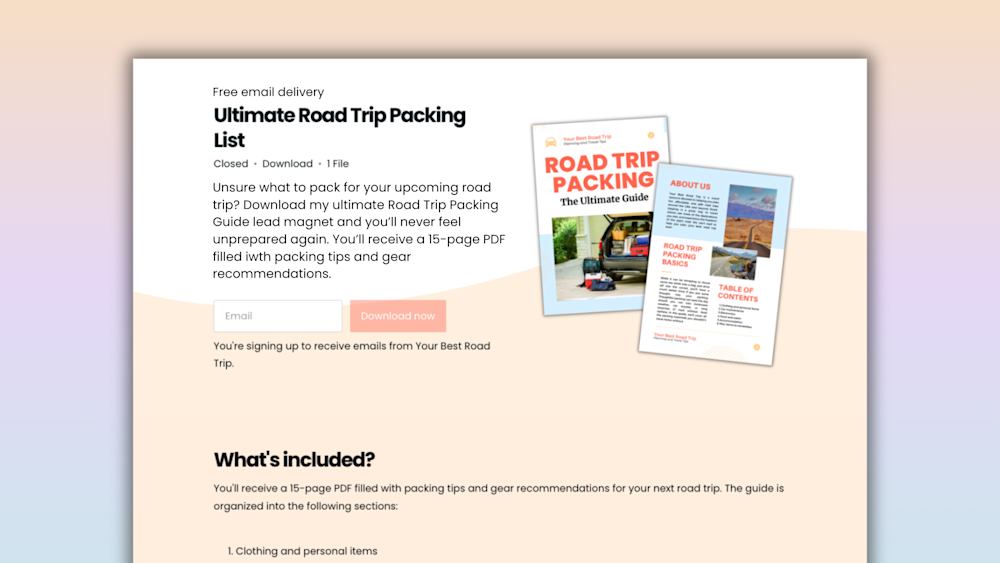As a digital entrepreneur, you hear a lot about passive income — the idea that once you create and launch your digital product or online course, you can start bringing in money while you sleep.
It might sound too good to be true. But for creators, the opportunity to earn passive income by selling digital products has never been bigger — especially if you have the right online marketing strategies in place.
Strategies like affiliate marketing, for example.
An affiliate marketing program turns your customers and partners into your biggest advocates. They spread the word about your brand and digital products, you make more sales, and the dream of passive income becomes a reality.
Today, we’re sharing five tips for creating and running your own affiliate marketing program, from finding partners to choosing the right commission structure.
But first, let’s make sure we’re all on the same page about one thing: What exactly is affiliate marketing?
What is affiliate marketing? And why should you use it?
Affiliate marketing is a performance-based marketing model in which brands (a.k.a. merchants or advertisers) pay affiliates (a.k.a. partners or publishers) to promote their products. Affiliates receive commission on every sale they make on behalf of the brand.
The affiliate marketing model is based on performance, so affiliates only receive payoffs from completed sales. Their sales are usually tracked through cookies or dedicated links.

Affiliate marketing is a highly scalable way for creators to promote their digital products and earn passive income. Once you create your affiliate program, it’s up to your affiliates to bring in customers.
You only pay affiliates when a customer makes a purchase. This makes affiliate marketing an ideal channel for busy creators without a high digital marketing budget.
That’s likely why 81% of brands use affiliate marketing, and why affiliate marketing spending is expected to reach $8.2 billion by 2022.
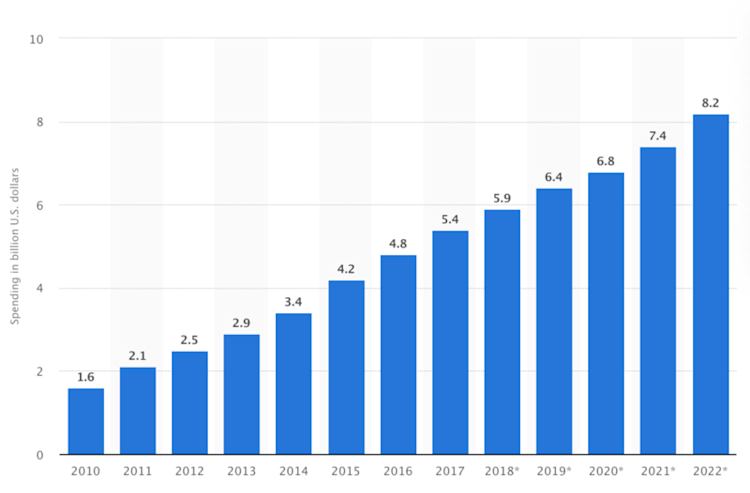
Affiliates can be experienced marketers, influencers, and content creators, but they can also be anyone who likes your products and has an audience to promote them to. Common affiliate marketing channels include:
-
Blogging and content marketing
-
Social media posts
-
Podcasts and YouTube channels
-
Email marketing
-
Direct referrals
No matter which channels your affiliates use, the most important ingredient in a successful affiliate marketing strategy is trust.
Your affiliates need to trust that they’ll be rewarded for their promotions. And the end customer needs to trust that the affiliate is recommending a valuable, high-quality product.
Trust is vital to the customer experience and your bottom line. Two-thirds of adults say trust plays a significant role in their big purchase decisions, but only 34% of consumers say they trust the brands they buy from.
That trust between an affiliate and their audience is particularly powerful for creators selling more expensive products, such as annual memberships or pricey online courses.
Research shows that conversion rates rise by 380% when customer testimonials — like product reviews from an affiliate or influencer — are included on a higher-priced product’s landing page.
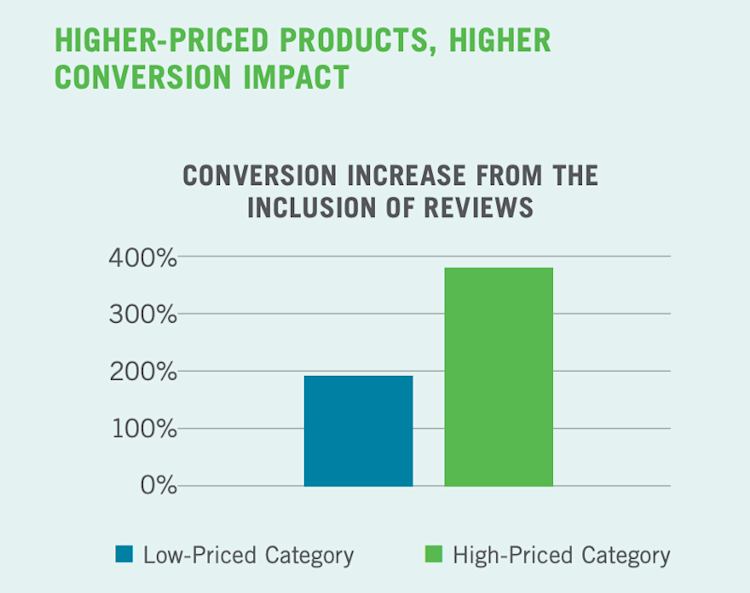
It’s clear that affiliate marketing can help you spread the word about your brand and sell more digital products. But as a busy online entrepreneur, how do you make the most of your affiliate marketing program?
Keep reading for five tips to help you do just that.
5 tips to boost your sales with affiliate marketing
1. Partner with the right affiliates
The affiliates you choose to partner with can make or break your affiliate marketing program.
Successful affiliates:
-
Have an audience that trusts their recommendations.
-
Use above-board (read: not shady) marketing tactics.
-
Are part of a specific niche.
So, how do you find those affiliate marketers?
If you want to partner with affiliates to promote your online course, start with previous and current course students.
Brand advocates — the customers who sing your praises — are 50% more likely to influence purchasing decisions than regular customers, making them perfect affiliates. Their recommendations are more credible when they’ve completed and benefitted from your course.
For example, creator and coach Misty Dorman of Life Ninjas includes information about joining her affiliate program at the end of her online course, Home Biz Kick-in-the-Pants Workshop.
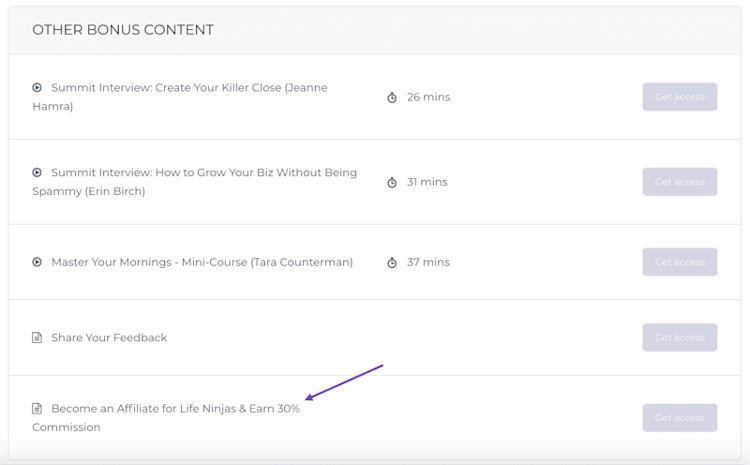
We also recommend reaching out to your email list when you launch your affiliate program.
Your current subscribers already enjoy your content, so they’re primed to spread the word — especially if you’re offering a reward. Set up a dedicated affiliate program page on your website and send them a link or simply send out an email with details about the program.
Beyond your current audience, finding affiliates who are the right fit for your brand is similar to identifying influencers. In influencer marketing, you want to work with influencers whose subscribers or followers match your target audience.
Here are some key questions to keep in mind as you seek out potential affiliates:
-
How many followers or subscribers do they have?
-
Do their values align with yours?
-
What other products do they promote?
-
Do they actually use and like the products they promote?
-
What marketing tactics do they use?
-
How many comments and shares does their content get? Do they respond to comments?
You can also use influencer marketing tools like BuzzSumo or Social Blade. These tools tell you the follower count, engagement rate, and other metrics for social media influencers and bloggers.
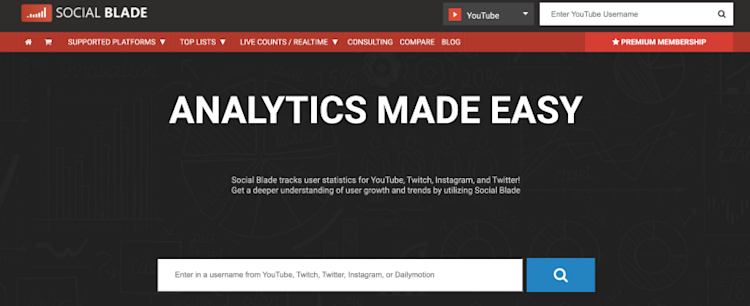
Last but not least, you may be tempted to work with an affiliate network like ShareASale or ClickBank to find affiliate partners. An affiliate network is a third-party platform that matches brands with affiliates.

Affiliate networks are one of the easiest options for creators to start an affiliate program. It’s also the most expensive. For example, ShareASale requires a $550 setup fee and $100 deposit, then charges a transaction fee for every affiliate sale.
Plus, affiliate networks give you far less control over your affiliate program. When you join a network, you agree to follow the network’s strict policies — whether you like them or not. That’s why we recommend you build and run your affiliate marketing program in-house.
And with the right tools, running your own affiliate program is easier than you think.
2. Use the right affiliate management tool
There are a variety of affiliate marketing platforms and tools available for entrepreneurs. The best tool for your business will depend on your goals, the products you plan to sell via affiliates, and what other technology you use.
For example, if you use WordPress to sell your digital products, you might choose a WordPress plugin like AffiliateWP. AffiliateWP lets you set the terms of your affiliate program directly from your WordPress dashboard.
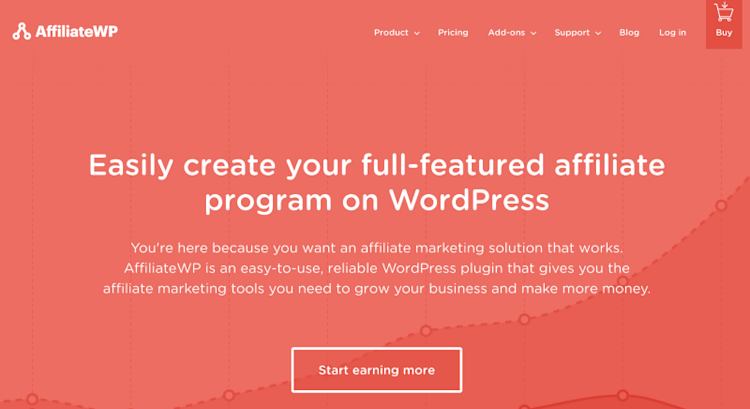
Another popular affiliate marketing tool is Tapfiliate. Tapfiliate offers social sharing, customizable email templates, and recurring or single commission rates.
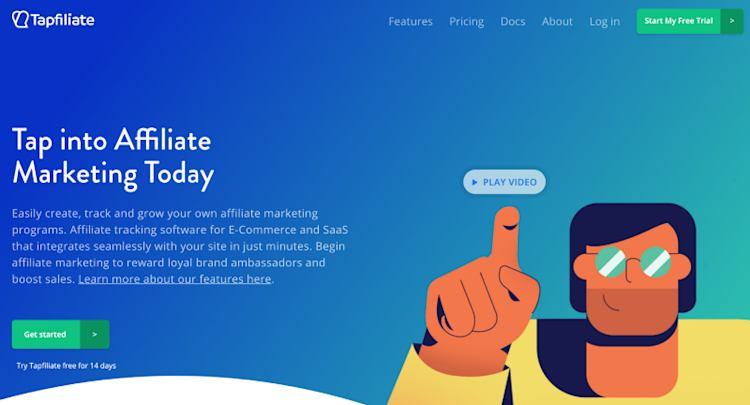
Of course, if you’d prefer to do things the super-easy way, we recommend managing your affiliate program with Podia. Don’t just take my (admittedly biased) word for it — here’s what entrepreneur and Podia creator Ryan Kulp has to say:
“Podia has a beautiful interface, page builder, and done-for-you affiliate tools. Not to mention the most robust membership program I’ve seen, which is critical for turning a one-time course sale into an ongoing customer relationship.”
Podia’s affiliate marketing platform lets you manage your affiliate program from the same dashboard where you sell your digital products. It’s easy for your customers and partners to shout about your products from the rooftops — and get paid for it.
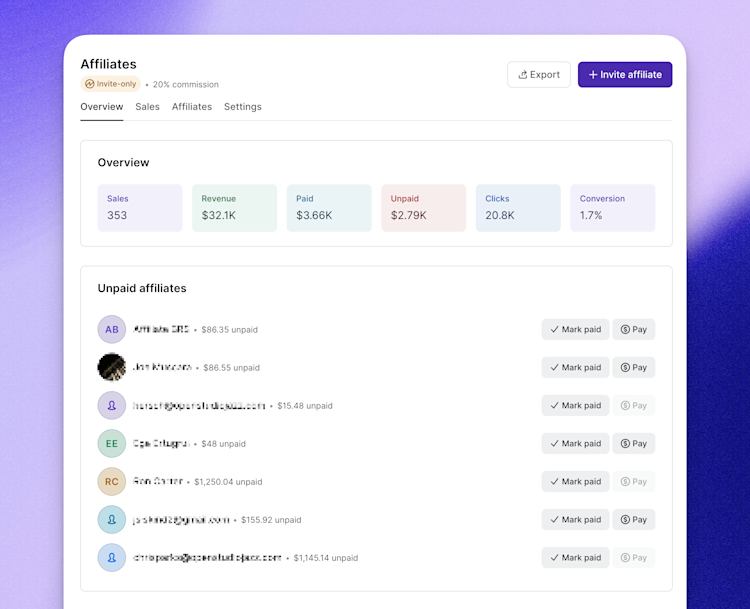
Available to creators on the Shaker plan, Podia’s affiliate marketing feature includes:
-
Easy setup. Launch your own affiliate program in just a few clicks, no additional software required.
-
Custom commission structures. Set custom commission amounts for each product, or use a default commission structure.
-
Public or invite-only. Let any customer become an affiliate or keep your program invite-only.
-
Fast payouts. We’ll do the math for you every month, so payouts are quick and simple.
-
Works with all Podia products. Set up affiliate commissions for any online course, digital download, webinar, membership, or product bundle.
-
Stay in touch with your affiliates. Send one-off broadcasts or automated campaigns to your affiliates right from your dashboard with our email marketing features.
Check out this help article for a tutorial on setting up your affiliate program with Podia.
3. Choose a commission structure that works for you
One of the biggest perks of affiliate marketing is how much you can customize your affiliate program to fit your brand, business, and goals.
That customization includes your commission structure. You can make your commission and payout structure as straightforward or as complex as you’d like.
For an example of the latter, look no further than Amazon Associates, Amazon’s affiliate marketing program.
Associates advertise by linking to Amazon affiliate products. When customers click the links and buy the products from Amazon, affiliates earn referral fees. Here’s where it gets complicated: the commission rates depend on the product category.
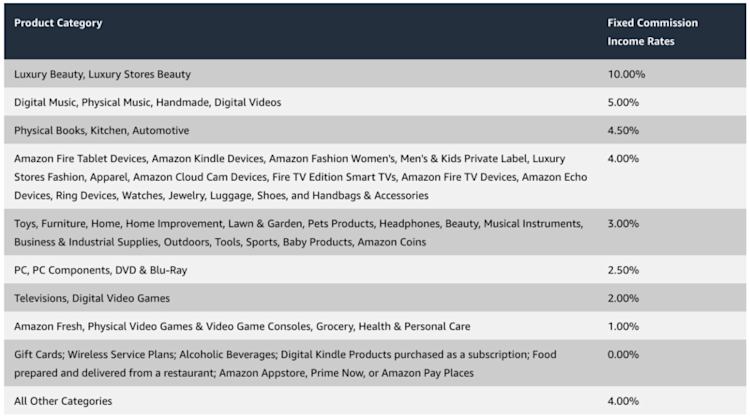
An ecommerce giant like Amazon has plenty of technology and staff in place to manage complex commissions. But for a small business owner or solopreneur, we recommend going with a simpler structure.
For example, entrepreneur and coach Minessa Konecky of Direct to Success offers a 15% commission for affiliates.
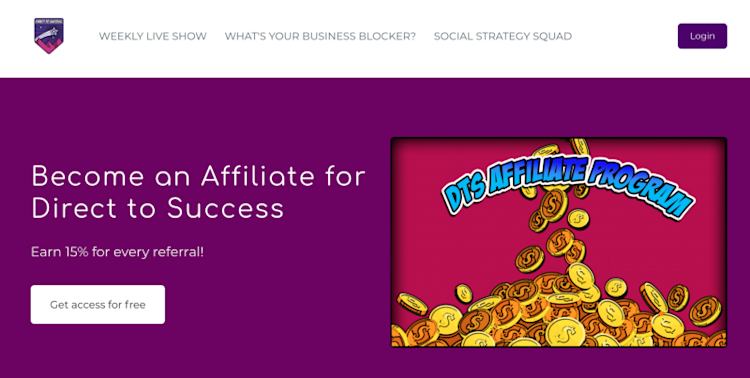
A simple percentage-based structure and payout schedule — say, 15% commission paid out on the 10th of every month — helps you stay organized and your affiliates know what to expect.
A clear commission setup is just one way you can help your affiliates succeed. Our next tip dives deeper into creating mutually beneficial affiliate relationships.
4. Set your affiliates up for success
When you make it easy for your affiliates to join your program and sell your products, you set everyone up for success.
First, be clear about which products are eligible for affiliate sales. While it is possible to include all of your products, we recommend starting with your most popular digital products.
For instance, while Amy Porterfield sells several digital products, her affiliate program focuses on just one: her highly successful Digital Course Academy, which retails for $1,997. Affiliate partners get 50% of every sale.
With potential affiliate income like that, it’s no wonder her affiliate program has a waitlist.

Focusing on just a few affiliate products makes it easier to support new affiliates as they get started.
Speaking of which, remember to communicate the details and guidelines for your program early and often. The more transparent you are upfront, the smoother your affiliate program will run.
When you onboard new affiliates, make sure to include these key details:
-
Commission structure and payout details. Do you have a payout threshold? How often will affiliates receive payouts?
-
How sales attribution works. Do you use cookies? A custom tracking link?
-
Your program’s terms of service, including promotion restrictions (like banning spammy tactics).
-
Brand guidelines, marketing materials, and resources, so they can start promoting right away.
Business coach Kimi Kinsey offers her partners an affiliate resources hub — a “one-stop page for everything you’ll need for being a successful affiliate of my brand”. Her promotional assets include graphics, swipe copy, logos, and resources for affiliate marketers.
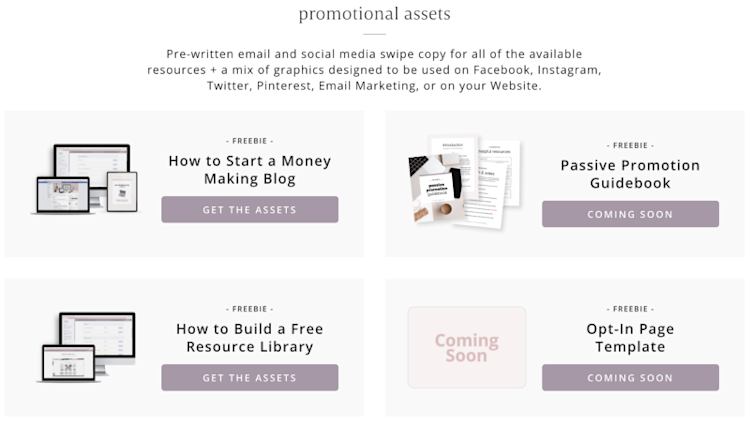
After you onboard your new affiliates, keep them engaged. Let them know about upcoming promotions so that they can run relevant marketing campaigns. Respond to their questions and recognize their achievements as the program grows.
In other words, like in all strong relationships, communication is key.
Before we wrap up, we have one more tip for making the most of your affiliate program. It’s all about the last stop before a customer converts: your landing page.
5. Create high-quality landing pages for affiliate traffic
When affiliates drive traffic to your products, they typically link to a landing page. Your affiliates might drive a ton of traffic to your site, but if your landing pages don’t convert, you won’t make the sales — and your affiliates won’t get paid.
To ensure those affiliate sales cross the finish line, here are three tips for creating a landing page that converts.
1. Know your target audience. As ecommerce and digital marketing pro Aaron Orendorff put it, “At their core, landing pages that convert speak directly to real people with real problems in search of real solutions.”
If you haven’t already, it’s time to do some customer research. When you learn about your audience’s pain points, goals, and perspectives, you can write persuasive copy that really connects with them.
Plus, your audience expects you to get to know them on an individual level. 84% of customers say that being treated like a person (not a number) is very important to winning their business.

Once you do your customer research, put it into action by mirroring your audience’s language in your sales copywriting.
This technique can also help your search engine optimization (SEO). When you use your customers’ language on your landing page, it’s more likely to match their search queries, show up in the search results, and bring in organic traffic.
2. Make it scannable. The most effective landing pages are often the simplest.
People spend an average of just 5.59 seconds looking at a website’s written content, and readability studies found that people scan text rather than reading word-for-word.
Your landing page isn’t the place for long-form content (in most cases, anyway). Instead, keep your copy concise, use bullet points to break up the text, and put the most important and relevant information at the top of the page.
3. Stick to one call-to-action (CTA). Last but not least, your landing page should include a single CTA. When you include too many different CTAs, you run into Hick’s Law, a.k.a. choice paralysis.

Hick’s Law posits that the more options you give someone, the longer they take to make a decision. (And they might just leave your landing page without clicking on any of your CTA buttons.)
The Podia site editor makes it easy to build landing pages for your affiliate products. For a step-by-step tutorial, plus more landing page tips and tricks, check out this guide to creating landing pages that convert.
Build a stellar affiliate marketing program
Done right, affiliate marketing can be a cost-effective and time-saving strategy to bring in more income and make more sales. To recap, here are five tips for creating and running a top-notch affiliate marketing program:
-
Partner with affiliates who align with your brand values, have an audience in your niche, and only use above-board marketing tactics. Your current audience is a great place to start.
-
Use the right affiliate management tools to build and run your program. Podia makes it easy for creators to create an affiliate program from the same dashboard where they sell digital products.
-
Choose a commission structure that works for you. A simple commission structure is your best bet, especially if you’re new to working with affiliates.
-
Set your affiliates up for success with clear guidelines, open communication, and ample resources. When you give them the tools and information to succeed, they’ll be ready to go above and beyond to promote your products.
-
Create landing pages that convert. Use customer language and straightforward copy and design to turn affiliate traffic into sales.
With all of these affiliate marketing tips under your belt, you’re ready to get the word out about your brand, sell more digital products, and start making money through affiliate partners.
